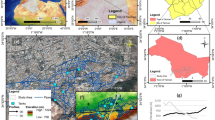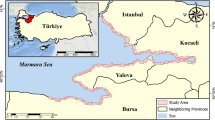Abstract
Rapid population growth, industrialization, and lifestyle modernization all increase water demand. However, water supplies are dramatically decreasing due to declining and irregular precipitation and the excessive use and deterioration of existing resources. This situation places tremendous pressure on decision-makers, who must implement plans to create new water supplies in regions likely to experience water shortages in the future. Deciding which projects to implement among various alternatives is challenging with a limited budget. This study aims to create a feasible strategic plan to select the most suitable alternative projects by proposing a multi-objective mixed-integer programming approach to the water supply problem. Considering several criteria, including chance of success, ease of application, nature-friendliness, and project prestige level, the proposed model is integrated using the analytical hierarchical process technique. Decision-makers’ views of the project alternatives are reflected by weights in the model. Also, interval numbers represent the costs of alternatives to handle the problem more realistically. A real-life situation is simulated under various scenarios to test the proposed model. The results show that the proposed integrated model generates more applicable solutions than a classic multi-objective optimization model.








Similar content being viewed by others
Availability of Data and Materials
The data generated and used in this study will be available upon reasonable request from the corresponding author.
References
Abdulbaki D, Al-Hindi M, Yassine A, Najm MA (2017) An optimization model for the allocation of water resources. J Clean Prod 164:994e1006
Al-Harbi KMAS (2001) Application of the AHP in project management. Int J Proj Manag 19(1):19–27
Bajany DM, Zhang L, Xu Y, Xia X (2021) Optimisation approach toward water management and energy security in Arid/Semiarid Regions. Environ Process 8:1455–1480
Cabrera Rochera E, Cobacho Jordán R, Estruch Guitart V, Aznar Bellver J (2011) Analytical hierarchical process (AHP) as a decision support tool in water resources management. J Water Supply Res T 60(6):343–351
Chen SJ, Hwang CL (1992) Fuzzy multiple attribute decision making methods. Fuzzy multiple attribute decision making: methods and applications. Springer Berlin Heidelberg, Berlin, Heidelberg, pp 289–486
Chin DA, Mazumdar A, Roy PK (2000) Water-resources engineering, vol 12. Prentice Hall, Englewood Cliffs
Fiedler M, Nedoma J, Ramík J, Rohn J, Zimmermann K (2006) Linear optimization problems with inexact data. Springer New York, NY
Gaur S, Chahar BR, Graillot D (2011) Analytic elements method and particle swarm optimization-based simulation–optimization model for groundwater management. J Hydrol 402:217–227
Huang Y, Li YP, Chen X, Ma YG (2012) Optimization of the irrigation water resources for agricultural sustainability in Tarim River Basin China. Agric Water Manag 107:74–85
Ishibuchi H, Tanaka H (1990) Multi-objective programming in optimization of the interval objective function. Eur J Oper Res 48(2):219–225
Kizhisseri MI, Mohamed MM, Hamouda MA (2022) A mixed-integer optimization model for water sector planning and policy making in arid regions. Water Resour Ind 28:100193
Lu H, Huang G, He L (2011) An inexact rough–interval fuzzy linear programming method for generating conjunctive water–allocation strategies to agricultural irrigation systems. Appl Math Model 35(9):4330–4434
Monte MBDS, Morais DC (2019) A decision model for identifying and solving problems in an urban water supply system. Water Resour Managt 33:4835–4848
Mo S, Duan H, Shen B, Wang D (2015) Interval two-stage stochastic integer programming for urban water resource management under uncertainty. J Coast Res 73:160–165
Nematian J, Movahhed SR (2019) An extended multi-objective mixed integer programming for water resources management through possibility theory. Eco Inform 54:100992
Pagano A, Giordano R, Vurro M (2021) A decision support system based on AHP for ranking strategies to manage emergencies on drinking water supply systems. Water Resour Managt 35(2):613–628
Pan Q, Zhang C, Guo S, Sun H, Du J, Guo P (2022) An interval multi-objective fuzzy-interval credibility-constrained nonlinear programming model for balancing agricultural and ecological water management. J Contam Hydrol 245:103958
Ren C, Guo P, Tan Q, Zhang L (2017) A multi-objective fuzzy programming model for optimal use of irrigation water and land resources under uncertainty in Gansu Province, China. J Clean Prod 164:85–94
Saaty TL (1980) The analytical hierarchy process, planning, priority. RWS publications USA, Resource allocation
SuperDecisions [Computer software]. (2003). Creative Decision Foundation (Version 2.10), Retrieved from https://www.superdecisions.com/
Zarghami M, Szidarovszky F (2009) Stochastic-fuzzy multi criteria decision making for robust water resources management. Stoch Environ Res Risk Assess 23(3):329–339
Zimmermann HJ (1978) Fuzzy programming and linear programming with several objective functions. Fuzzy Sets Syst 1:45–55
Wang R, Li Y, Tan Q (2015) A review of inexact optimization modeling and its application to integrated water resources management. Front Earth Sci 9(1):51–64
Wang Y, Li Z, Guo S, Zhang F, Guo P (2020) A risk-based fuzzy boundary interval two-stage stochastic water resources management programming approach under uncertainty. J Hydrol 582:124553
Willet J, King J, Wetser K, Dykstra JE, Essink GHO, Rijnaarts HH (2020) Water supply network model for sustainable industrial resource use a case study of Zeeuws-Vlaanderen in the Netherlands. Water Resour Ind 24:100131
Funding
None.
Author information
Authors and Affiliations
Contributions
All authors (N. Ucler and H. Gonce Kocken) contributed to the study conception, design, data analysis, and manuscript.
Corresponding author
Ethics declarations
Ethical Approval
This article does not contain any studies with human participants or animals performed by any of the authors.
Consent to Participate
Authors consent to their participation in the entire review process.
Consent to Publish
Authors allow publication if the research is accepted.
Competing Interests
The authors declare that there is no conflict of interest regarding the publication of this article.
Additional information
Publisher's Note
Springer Nature remains neutral with regard to jurisdictional claims in published maps and institutional affiliations.
Rights and permissions
Springer Nature or its licensor (e.g. a society or other partner) holds exclusive rights to this article under a publishing agreement with the author(s) or other rightsholder(s); author self-archiving of the accepted manuscript version of this article is solely governed by the terms of such publishing agreement and applicable law.
About this article
Cite this article
Ucler, N., Gonce Kocken, H. A Scenario-based Interval Multi-objective Mixed-integer Programming Model for a Water Supply Problem: An Integrated AHP Technique. Water Resour Manage 37, 5973–5988 (2023). https://doi.org/10.1007/s11269-023-03638-2
Received:
Accepted:
Published:
Issue Date:
DOI: https://doi.org/10.1007/s11269-023-03638-2




